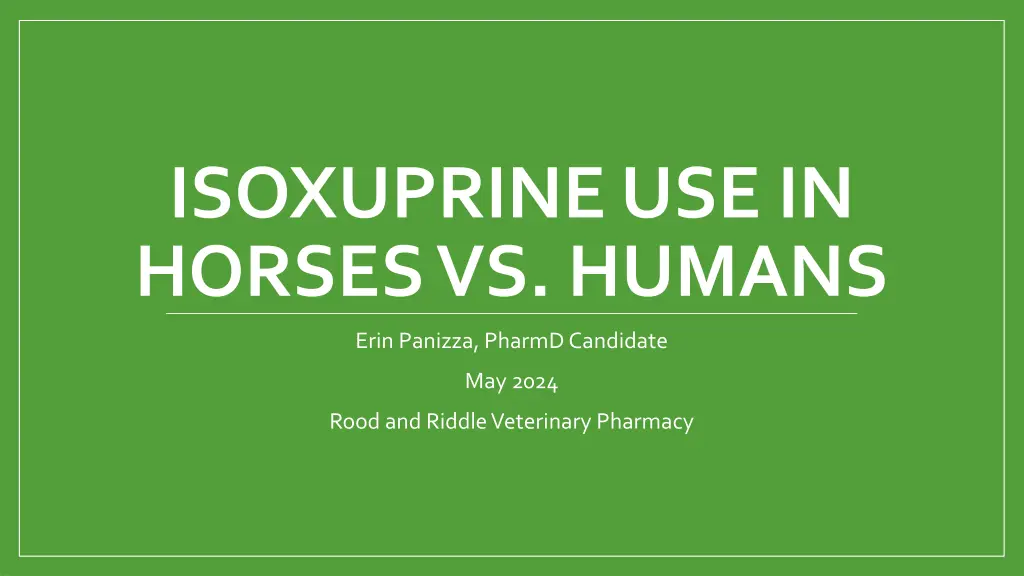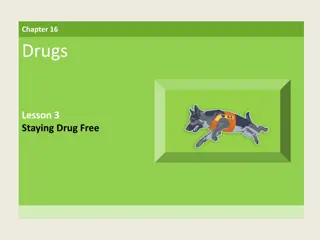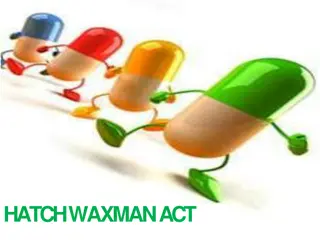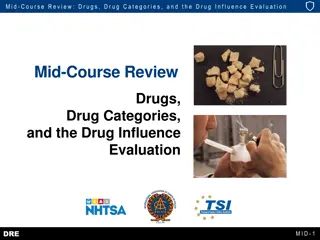
Comparison of Isoxuprine Use in Horses and Humans
Learn about the differences in the use of isoxuprine in horses and humans. Isoxuprine is used in horses for conditions like navicular disease, sesamoiditis, and laminitis, while in humans, it is used for cerebrovascular insufficiency and peripheral vascular disease. Discover the mechanisms of action, dosing information, and more.
Download Presentation

Please find below an Image/Link to download the presentation.
The content on the website is provided AS IS for your information and personal use only. It may not be sold, licensed, or shared on other websites without obtaining consent from the author. If you encounter any issues during the download, it is possible that the publisher has removed the file from their server.
You are allowed to download the files provided on this website for personal or commercial use, subject to the condition that they are used lawfully. All files are the property of their respective owners.
The content on the website is provided AS IS for your information and personal use only. It may not be sold, licensed, or shared on other websites without obtaining consent from the author.
E N D
Presentation Transcript
ISOXUPRINE USE IN HORSES VS. HUMANS Erin Panizza, PharmD Candidate May 2024 Rood and Riddle Veterinary Pharmacy
Uses Horses: treatment of navicular disease, sesamoiditis, and laminitis Humans: treatment of cerebrovascular insufficiency and peripheral vascular disease Tablets were taken off the market in October of 2021 because there wasn t enough evidence to support its use for specific indications Oral powder is still available for compounding
Horses Navicular disease: chronic degenerative condition of the navicular bone Pathophysiology unknown Greatest consensus appears to support a biomechanical component (causing increased bone medullary pressure) and possibly a vascular component Sesamoiditis: inflammation of sesamoid and its ligamentous attachments in a horse (suspensory apparatus)
Horses Laminitis: failure of attachment of the epidermal laminae connected to the hoof wall from the dermal laminae attached to the distant phalanx
Humans Cerebrovascular Insufficiency: one or more arteries supplying blood to the brain becomes obstructed Obstruction can lead to strokes or transient ischemic attacks Causes: inadequate blood pressure, impaired cardiac output, narrowing of blood vessels, atherosclerosis, and more Peripheral Vascular Disease: chronic, progressive condition that occurs when blood circulation to a body part other than the heart or brain is reduced Can lead to limb loss Feet and legs most often affected
Mechanism of Action Direct vascular smooth muscle relaxation primarily in skeletal muscle therefore increasing blood flow Skin blood flow is usually unaffected At high doses, decreases blood viscosity and reduces platelet aggregation Relaxes uterine smooth muscle Possible positive inotropic (contractility) and chronotropic (heart rate) effects on the heart
Dosing Plumb s: 1.2 mg/kg PO every 8 to 12 hours initially, then decrease frequency to once a day, then to every other day R&R Formulary: 0.66-1.32 mg/kg PO every 12 hours
Available Dosage Forms Oil suspension 10 or 30 mL bottle 10 mg/mL Syrup 50 or 100 mL bottle 10 mg/mL Powder Jar 50, 60, 100, or 200 scoop jar 100 mg/scp, 300 mg/scp, 400 mg/scp, 500 mg/scp, 600 mg/scp Injection 10 mL vial 10 mg/mL Suspension 120, 200, 480, 750, or 960 mL bottle 50 mg/mL
Adverse Effects After parenteral administration CNS stimulation (uneasiness, hyperexcitability, nose-rubbing), tachycardia, increased cardiac output, or sweating CNS hyperexcitability may be treated with diazepam if necessary After oral administration Hypotension, tachycardia, and GI effects (lack of appetite, diarrhea) Hypotension may be treated with IV fluids if necessary Effects unlikely
Other Considerations The Association of Racing Commissioners International (ARCI) has designated this drug as a class 4 substance Class 4: Drugs in this category comprise primarily therapeutic medications routinely used in racehorses. These may influence performance, but generally have a more limited ability to do so. Penalty Class C: Antihistamines that do not have a significant CNS depressant effect.
Other Considerations Isoxsuprine should notbe given to horses who Have given birth within the past week Have active bleeding Have had an allergic reaction to it
References ASSOCIATION OF RACING COMMISSIONERS INTERNATIONAL. Uniform-classification-guidelines-version-17.0.pdf. 2023. Accessed May 26, 2024. https://www.arci.com/docs/Uniform-Classification-Guidelines-Version-17.0.pdf Belknap JK. Laminitis in horses -musculoskeletal system. Merck Veterinary Manual. 2015. Accessed May 26, 2024. https://www.merckvetmanual.com/musculoskeletal- system/lameness-in-horses/laminitis-in-horses. Belknap JK. Navicular disease in horses -musculoskeletal system. Merck Veterinary Manual. 2015. Accessed May 26, 2024. https://www.merckvetmanual.com/musculoskeletal-system/lameness-in-horses/navicular-disease-in-horses Brokken MT. Sesamoiditis in horses -musculoskeletal system. Merck Veterinary Manual. 2015. Accessed May 26, 2024. https://www.merckvetmanual.com/musculoskeletal-system/lameness-in-horses/sesamoiditis-in-horses Center for Drug Evaluation and Research. FDA notification regarding isoxsuprine hydrochloride drug products. U.S. Food and Drug Administration. Accessed May 26, 2024. https://www.fda.gov/drugs/fda-notification-regarding-isoxsuprine-hydrochloride-drug- products#:~:text=As%20of%20Oct.,drug%20application%20approved%20by%20FDA John Hopkins Medicine. Cerebrovascular insufficiency. Johns Hopkins Medicine. Accessed May 26, 2024. https://www.hopkinsmedicine.org/neurology- neurosurgery/specialty-areas/cerebrovascular/cerebrovascular- insufficiency#:~:text=What%20is%20cerebrovascular%20insufficiency%3F,or%20%22mini%20strokes%22) John Hopkins Medicine. Peripheral vascular disease. Johns Hopkins Medicine. Accessed May 26, 2024. https://www.hopkinsmedicine.org/health/conditions-and- diseases/peripheral-vascular-disease Plumb s Veterinary Drug Handbook Rood & Riddle 2023-2024 Formulary UpToDate Lexidrug WorldHorseWelfare. Laminitis in horses. World Horse Welfare. March 12, 2024. Accessed May 26, 2024. https://www.worldhorsewelfare.org/advice/laminitis-in- horses#:~:text=What%20is%20laminitis?,pony%2C%20donkey%20or%20their%20hybrids






















